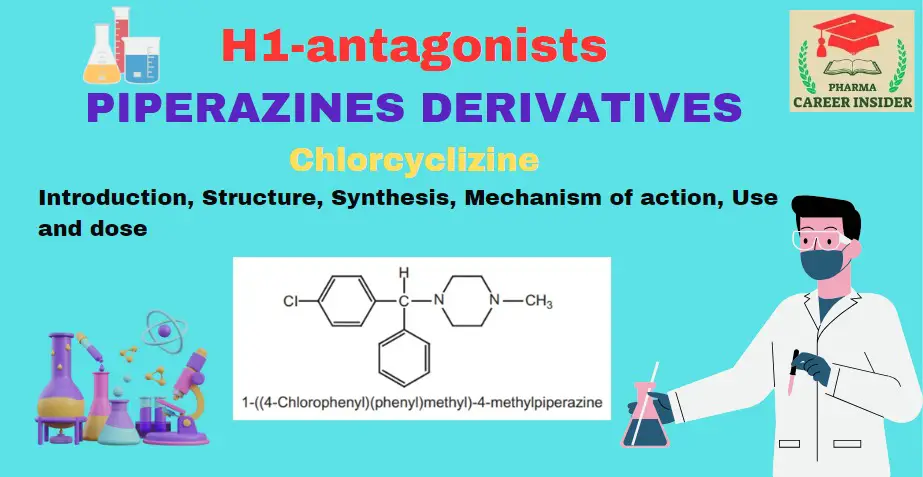Introduction
Meclizine is a widely used antihistamine known for its efficacy in preventing and alleviating symptoms associated with motion sickness. As an H1 receptor antagonist, it blocks the effects of histamine, providing relief from nausea, vomiting, and dizziness. Meclizine’s additional antimuscarinic properties contribute to its effectiveness as an antiemetic.
Structure

Synthesis

Mechanism of action
Meclizine’s mechanism of action involves its role as an H1 receptor antagonist and its antimuscarinic properties:
- H1 Receptor Antagonism:
- Meclizine blocks the effects of histamine on H1 receptors.
- By inhibiting histamine action, it alleviates symptoms associated with allergic reactions, motion sickness, and vestibular disorders.
- Antimuscarinic Properties:
- Meclizine exhibits antimuscarinic (anticholinergic) effects.
- This contributes to its antiemetic (anti-nausea) properties by affecting the activity of acetylcholine in the central nervous system.
Properties and uses:
White or slightly yellowish, crystalline powder with no characteristic odour or taste. Meclizine is insoluble in water and ether but soluble in chloroform and alcohol. They moderately potent antihistaminic agents. This is used primarily as an antinauseant in the prevention and treatment of motion sickness, and in the treatment of nausea and vomiting associated with vertigo and radiation sickness.
Dose:
The usual dose is 25–50 mg per day.

